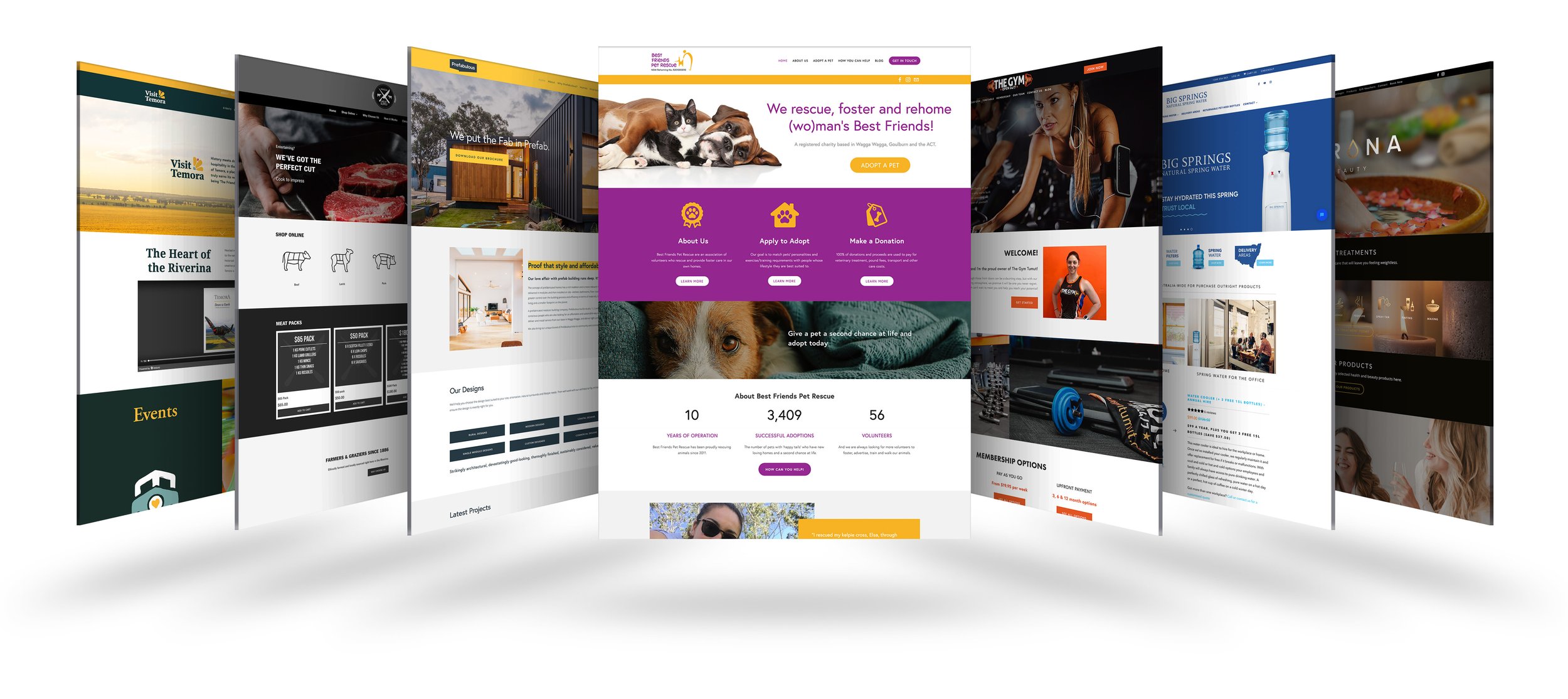Leading Tips for Producing an Impactful Internet Site Style That Transforms
In today's digital landscape, the value of an impactful website style can not be overstated, especially when it concerns transforming site visitors into consumers. To attain this, one need to take into consideration a range of aspects, including comprehending the target audience, prioritizing customer experience, and optimizing for mobile systems. The tactical use of engaging call-to-actions and a distinct aesthetic hierarchy plays an important function in directing individuals with their journey. As we discover these crucial elements, it ends up being evident that the success of your website depends upon greater than simply appearance; it needs a thoughtful strategy to layout and functionality.

Understand Your Target Audience
Comprehending your target market is essential to efficient site style, as it prepares for producing an appealing customer experience. Recognizing that your individuals are, including their demographics, choices, and actions, allows developers to customize the internet site's web content, design, and capability to meet specific demands.
Performing complete market research is crucial in this procedure. Studies, interviews, and analytics can provide useful understandings right into user assumptions and pain factors. By compiling this information, designers can produce user personas that stand for different segments of the target market, ensuring that design decisions are informed and relevant.
Moreover, recognizing the target audience helps in picking ideal design elements such as color pattern, typography, and imagery that reverberate with customers. A website that talks directly to its audience fosters a sense of link and depend on, urging longer visits and higher conversion prices.
Ultimately, a user-centered approach to site layout not just enhances individual contentment however likewise sustains service objectives by driving interaction and loyalty. By focusing on the requirements and preferences of the target market, a site can successfully serve its objective and accomplish desired end results.
Prioritize Individual Experience
To enhance the total performance of an internet site, prioritizing customer experience (UX) is crucial (Website Design). A well-designed UX makes certain that visitors can navigate the site easily, discover information swiftly, and involve with material meaningfully. This brings about increased customer satisfaction and higher conversion prices
Begin by carrying out user-friendly navigating. Menus needs to be rationally structured, allowing customers to locate essential areas of the site with minimal initiative. Consistency in style aspects, such as color pattern and font styles, fosters knowledge, which is essential for keeping user involvement.
Additionally, take into consideration the packing rate of your website. A delay of simply a couple of secs can result in considerable drop-offs, as customers are much less most likely to await a slow-loading page. Simplifying images and maximizing code can improve efficiency and preserve visitors.
Furthermore, clarity in content discussion is vital. Usage concise, interesting language and break up message with visuals to enhance readability. By prioritizing user experience, you not just produce an extra enjoyable environment for site visitors but additionally reinforce your brand name's trustworthiness. Ultimately, a focus on index UX is an investment in the long-lasting success of your website.
Maximize for Mobile Devices
Optimizing for mobile phones is vital in today's digital landscape, where an enhancing number of individuals accessibility internet sites via mobile phones and tablet computers. A mobile-friendly design not just improves customer experience yet additionally plays a considerable role in enhancing search engine positions. To achieve this, it is vital to adopt a receptive layout that immediately adapts to different screen sizes and orientations.

Packing rate is another critical factor; mobile users are usually less individual and expect quick access to info. By prioritizing mobile optimization, you make sure that your website continues to be competitive and efficiently involves a wider audience.
Use Compelling Call-to-Actions
A site's efficiency often hinges on its capacity to guide check this site out visitors towards preferred activities, making compelling call-to-actions (CTAs) crucial components of design. CTAs function as the crucial factors that direct users to involve with the website, whether that means purchasing, signing up for a newsletter, or downloading and install a resource.
To produce effective CTAs, clearness is vital. Use succinct language that clearly interacts the activity you want the individual to take.
Additionally, the style of CTAs need to stand apart without being interfering. Utilize contrasting colors and clear fonts to ensure i was reading this they capture interest. Furthermore, consider utilizing directional signs, such as arrowheads or images, to assist customers towards these buttons. By focusing on these components, businesses can dramatically enhance user interaction, driving conversions and eventually accomplishing their website's objectives.
Concentrate On Visual Pecking Order
Efficient site layout relies greatly on a well-structured aesthetic hierarchy that overviews customers through material effortlessly. By organizing elements in a fashion that focuses on info, developers can boost customer experience and assist in decision-making. This includes utilizing dimension, shade, contrast, and spacing strategically to accentuate the most important elements of a webpage.
Using larger font styles for headings and subheadings develops a clear difference in between various sections, allowing customers to check material effortlessly. In addition, employing different shades for buttons and calls-to-action can record customer interest and motivate communication. Whitespace is another essential component; it stops clutter and makes it possible for customers to concentrate on essential messages without interruptions.
Pictures and graphics must match the text while likewise sticking to the established pecking order, reinforcing the overall message (Website Design). Consistency in style components, such as color pattern and typography, additional enhances the aesthetic power structure, making navigation intuitive

Verdict
To conclude, effective web site style requires a detailed understanding of the target audience, prioritization of customer experience, and mobile optimization. The calculated usage of engaging call-to-actions and a distinct visual hierarchy further boosts customer involvement. By applying these principles, websites can attain greater conversion prices, ensuring that style components not just attract site visitors but likewise promote seamless navigation and communication. Ultimately, a well-executed site style serves as an important component in driving individual activities and attaining organization purposes.